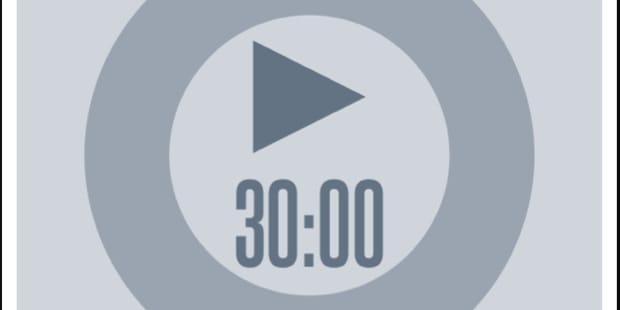
Lately I’ve been using the iOS app 30/30 by Binary Hammer a lot more. I like the ability it gives me to quickly move aroudn the tasks I’ve set out for the day and how it gives me a means of setting time alottments up for said tasks.
Before I get into how I use 30/30, let me remind you that I’m not a fan of The Pomodoro Technique. It’s not because of the fact that it involves the timing of tasks and breaks, but it’s how it is incredibly rigid with those times. 30/30 allows me to be very flexible with the time I allow for tasks, meaning I can spend one hour on Lifehack editing and 20 minutes on email if I choose, rather than following the structure that The Pomodoro Technique mandates.
When I start my day, I take a look at OmniFocus first, and then I decide what tasks I want to add to 30/30 for the morning hours. These tasks usually number around four or five, which may seem small but one of them is generally “Check Lifehack Tasks in Asana”, which is one that contains a large amount of action items specific to my work over at Lifehack. Once the items are added to 30/30, I start to figure out how much time each one will receive, either based on known history or the amount I intend or desire to spend on them. I colour code them and also give each an icon that represents them best, and then I take a good look at the list and begin to move them around according to importance and priority (not always an equal metric).
Then I get to work.
Once the morning ends and I’ve had lunch, I repeat the same process (in full) for the afternoon and evening, leaving anything that is yet to be completed from the morning on the list. I combine these two times of day because they do tend to bleed into one another depending on how my day goes. Anything left over at the end of the day remains there for the next morning as well, ready to be evaluated once a fresh list has been assembled.
At the end of the day, I open OmniFocus (and Asana for team-based tasks) and ensure that any items that have been complteed are marked as such in those apps. Sometimes I’ll even compose the next morning’s list after doing so just to put me that much further ahead for the next day. The great thing about 30/30 is that when you complete the time alooted for a task, the task remains. You are simply notified that your “time for that task is up” and then it moves you into the next task, waiting for you to start the timer once again. I often find that many of my routine tasks remain on my 30/30 list for days because they are repeating tasks; and 30/30 also allows me to grow (and shrink) the list as needed.
Essentially, 30/30 has replaced paper for me in this regard. I still use paper for brainstorming, outlining and quick capturing while on the go, but 30/30 has taken the need for paper lists when I’m at home out of the equation.
30/30 is fast, simple to use and doesn’t make a huge dent in your wallet (in fact, it doesn’t have to make one at all — it is donationware, after all). It’s become a valued addition to my productivity workflow (I can’t wait until it works with Launch Center Pro…fingers crossed), and is well worth a look if you’re trying to dive deeper into the digital realm and want to have a robust priority list app on hand to complement the more robust apps in your arsenal like OmniFocus and Asana.
(Photo credit: Binary Hammer)

